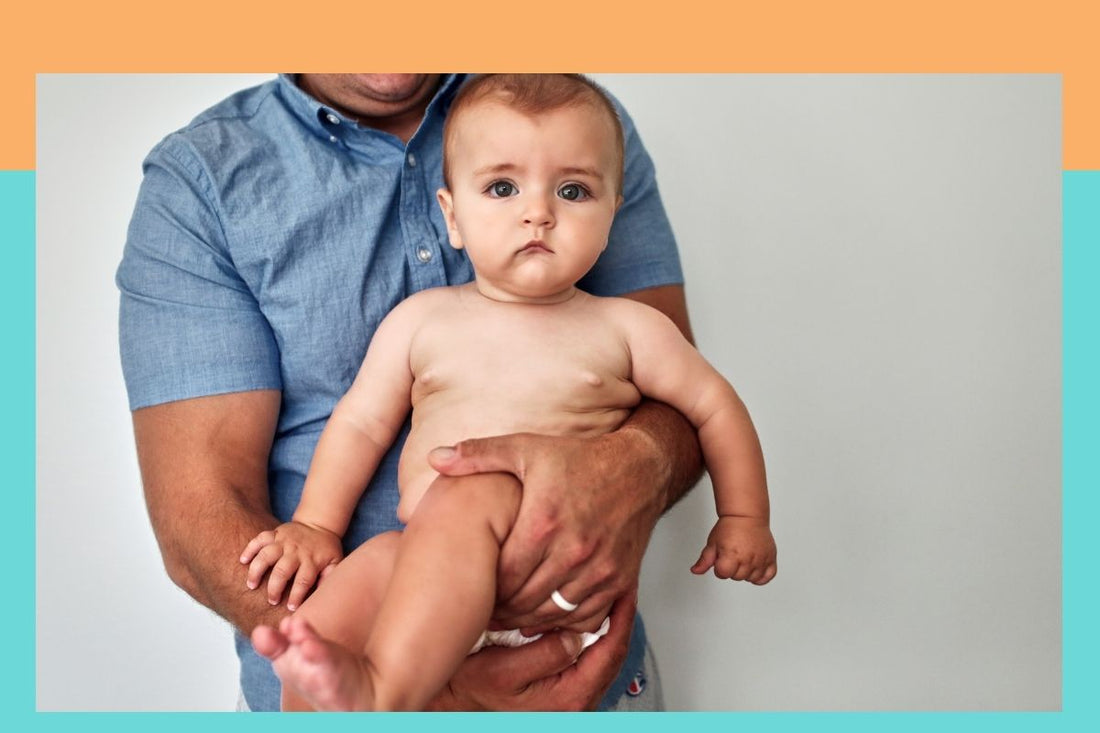
How Often Should You Bathe a Baby?
Share
Although many older children and adults shower daily, bathing too frequently can actually dry out and damage your little one’s delicate skin.
From newborns to toddlers, let’s dive into how often you should bathe a baby to keep their skin healthy and happy!
Why Are Less Frequent Baths Best for Babies?
Every time you bath your baby, the water strips moisture out of their skin. While these effects can be minimized by using gentle soaps, lukewarm water, and brief baths, it’s best to bathe your child sparingly.
Frequent cleansing also disrupts their skin microbiome, the natural balance of bacteria on the skin’s surface. When this gets disrupted — especially in the first few months of life — it can harm their immune responses and increase their likelihood of developing certain allergies.

Bathing From Day 1 to Toddlerhood
You can count the baths your baby needs each week on less than one hand! This applies from the day they’re born all the way up into toddlerhood.
Your Baby’s First Bath
After your baby is born, it’s best to wait at least 24 hours to give them their first bath. Some even recommend delaying their bath for up to 48 hours.
Why the delay? Well, when your little one emerges from the womb, they’re covered in white coating called the vernix. This barrier helps regulate their body temperature and keep their skin moisturized. The longer the vernix stays on, the healthier their skin will be.
Delaying your newborn’s first bath also allows you to spend more quality skin-to-skin contact time together and form a deep, loving bond.
Bathing In the First Month
After their first bath, infants only need one to two baths a week.
Sponge baths are a great way to gently bathe your little one during the first month.
Extra baths should only be given if absolutely necessary (spit-ups, diaper messes, etc.). In this case, just focus on the area of the mess — no need to submerge their whole body!
Bathing from 1-6 months
During the first half of their first year, continue to bathe your baby sparingly. One to two baths a week should do the trick.
After three months, you can up the frequency to three times a week. Although they don’t necessarily need it as they aren’t very active yet, it won’t do any harm.
Use a gentle soap and a a natural moisturizer after bathing skin hydrated.
Keep baths brief (i.e., less than 10 minutes) as excessive soaking can draw moisture out of their delicate skin.
Bathing from 6-12 months
After your baby celebrates their first half birthday, they will begin to get more aactive. Babies typically begin crawling between months six and 13, while walking can begin as soon as month eight!
Regardless of the milestones your baby hits, expect lots more movement. And with more movement comes the need for more baths!
While you should still aim for 2-3 baths per week, they will likely need extra tub time on occasion. Since they’ll be sitting up, you will also want to start using a baby bathing tub.
Bathing at 12+ months
Once your baby reaches 12 months old, they’re officially toddlers. At this age, experts still recommend bathing your child 2-3 times a week.
But as most of us know, toddlers can get dirty a great deal faster than a 6-month-old. Use your best judgment in deciding whether or not you need to bathe your child every day.
Remember, full-on baths aren’t always necessary. You can wash your child’s face and diaper area more often than you would their whole body.

How to Keep Your Baby's Skin Clean Between Baths
On days when your baby doesn’t get a bath, they might still need their face, neck, and diaper area cleaned. Be sure to check anywhere they have skin folds, too, such as their thighs and behind their ears.
After your baby drools, eats, or spits up, wipe down their mouths, necks, and faces. Dried saliva, milk, and food can irritate their skin and cause rashes if not wiped away frequently. Use a dry or damp cloth and a gentle touch, making sure not to rub too hard.
During every diaper change, cleanse the area with a gentle, moisturizing product like NOLEO 3-in-1 Diaper Cleanser and Moisturizer. This will help keep their diaper area clean without damaging or drying out the skin barrier.
NOLEO 3-in-1 is also certified microbiome-friendly by MyMicrobiome, so it will help preserve the balance of good bacteria on the skin between baths.
